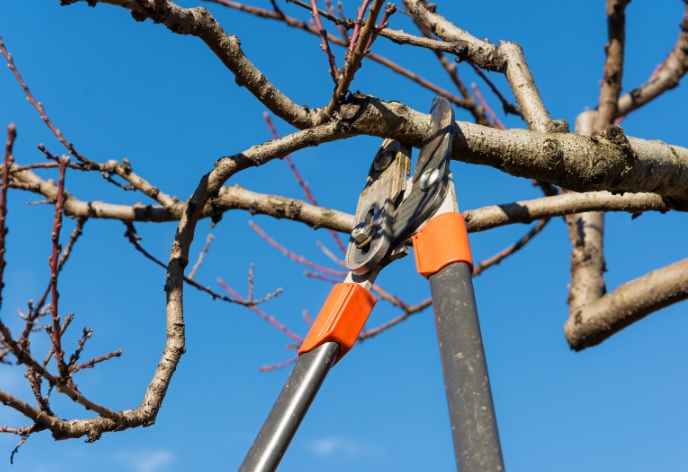Tree pruning, which is the act of removing unnecessary tree branches, provides numerous advantages. First, the tree is healthier and safer because dead or diseased branches are eliminated. Moreover, pruning enhances the sunlight and airflow, providing the tree with the opportunity for optimal growth. Pruning is especially important for fruit-bearing trees to regulate growth, increase yields, optimize fruit size, and maintain tree vigor. While limited tree pruning can be done during the late summer months to address immediate safety concerns, the best time to prune trees is during the winter when they are dormant. Here are some reasons why pruning your trees during winter is best.
Trees Are Dormant
During the winter months, trees that lose their leaves in the fall (called deciduous trees) are dormant. Therefore, they are not actively growing or producing leaves, flowers, or fruit during this stage. Pruning during dormancy reduces stress on the tree because the tree doesn’t have to devote energy to support new growth.
Superior Visibility
The absence of leaves grants a clear view of the tree’s structural framework in the winter. For this reason, tree professionals can complete a comprehensive assessment of its health and overall shape. This visibility simplifies identifying and safely removing dead or diseased branches. Furthermore, it facilitates strategic pruning cuts that enhance the tree’s form, promoting a more balanced appearance.
Reduced Disease Transmission
Many tree diseases and pests are also dormant during the winter. For this reason, pruning during this time decreases the risk of these harmful agents spreading to fresh pruning wounds. This winter pruning strategy preserves the tree’s vitality and contributes to its long-term resilience against potential threats.
Lessened Impact on Wildlife
Pruning during the winter in New England minimizes disturbance to birds and wildlife that may rely on the tree for nesting or shelter during the warmer months. With branches bare and wildlife typically less active in the colder season, pruning at this time ensures that these creatures can continue to utilize the tree’s canopy without disruption. By respecting their habitat during winter, biodiversity and conservation is promoted, helping to maintain a balanced and thriving ecosystem.
As a general rule of thumb, pruning your trees during winter is the best practice for deciduous trees. However, it’s worth mentioning that some trees benefit from specific pruning practices and timing based on their growth patterns. It’s essential to consider the particular needs of the tree species being pruned.
Contact LaBier Brothers Tree Experts to learn how we can keep your trees healthy and robust with tree pruning.

